Part 3 - The Coming Attack on China
Whether the effort to isolate and meaningfully slow China’s rise through a Taiwan provocation is successful hinges on a few key factors. 🧵
Whether the effort to isolate and meaningfully slow China’s rise through a Taiwan provocation is successful hinges on a few key factors. 🧵
Firstly, vassal states in the Asia-Pacific region must willingly allow themselves to be used as proxy states in a potentially catastrophic war against their largest trading partner.
Secondly, European vassals must continue subordinating their economic interests to US geopolitical bullying. If the EU instead refuses to join the US in sanction China and remain neutral, the isolation effort will fail.
thetricontinental.org/newsletterissu…
thetricontinental.org/newsletterissu…
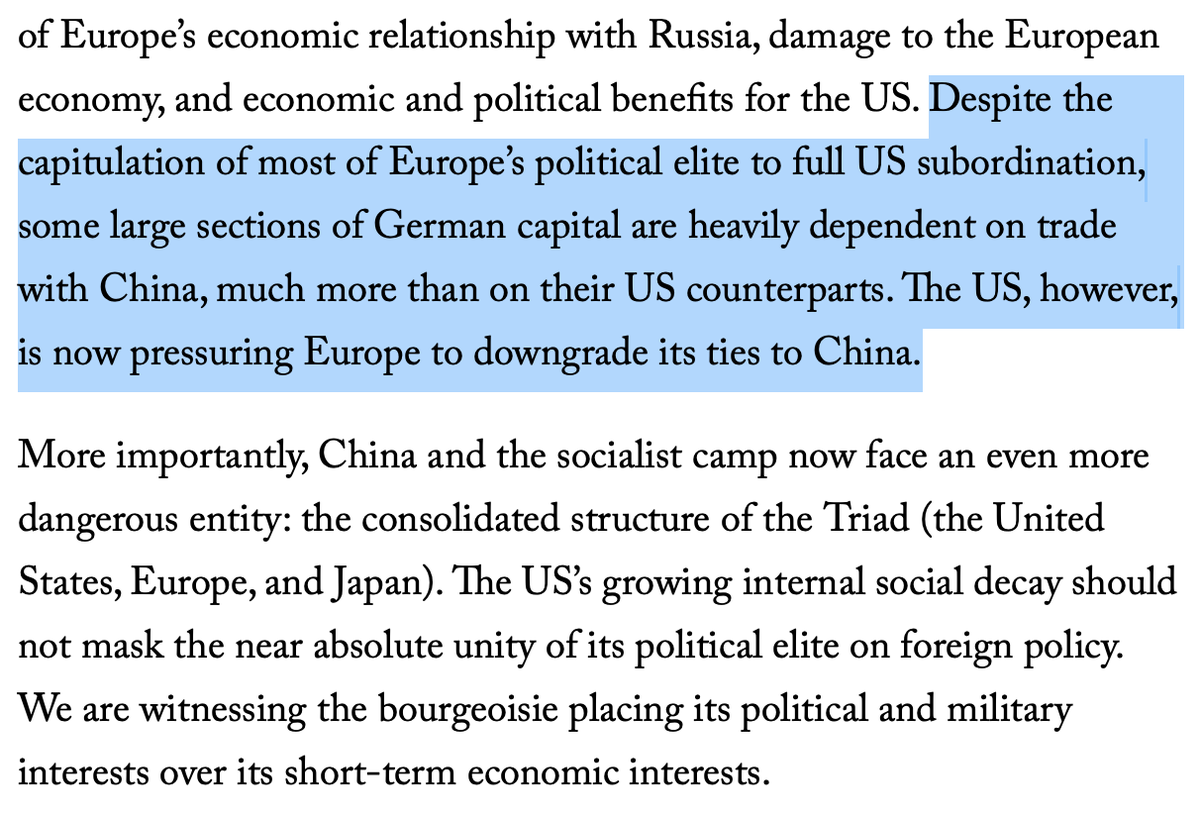
Thirdly, isolating China hinges on being able to drive a wedge between China and Russia, its largest trade partner.
The proxy war in Ukraine was an effort to weaken and isolate Russia in preparation for this plan that, one year in, looks to have spectacularly failed.

The proxy war in Ukraine was an effort to weaken and isolate Russia in preparation for this plan that, one year in, looks to have spectacularly failed.
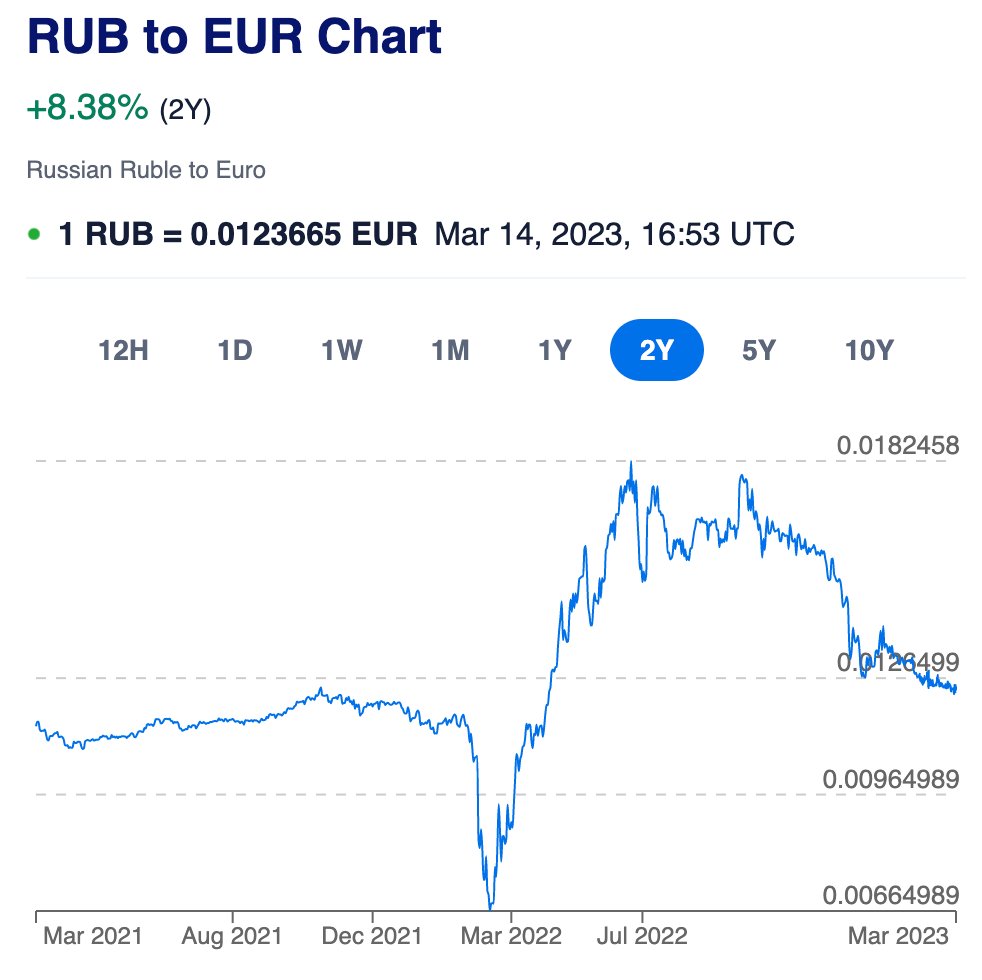
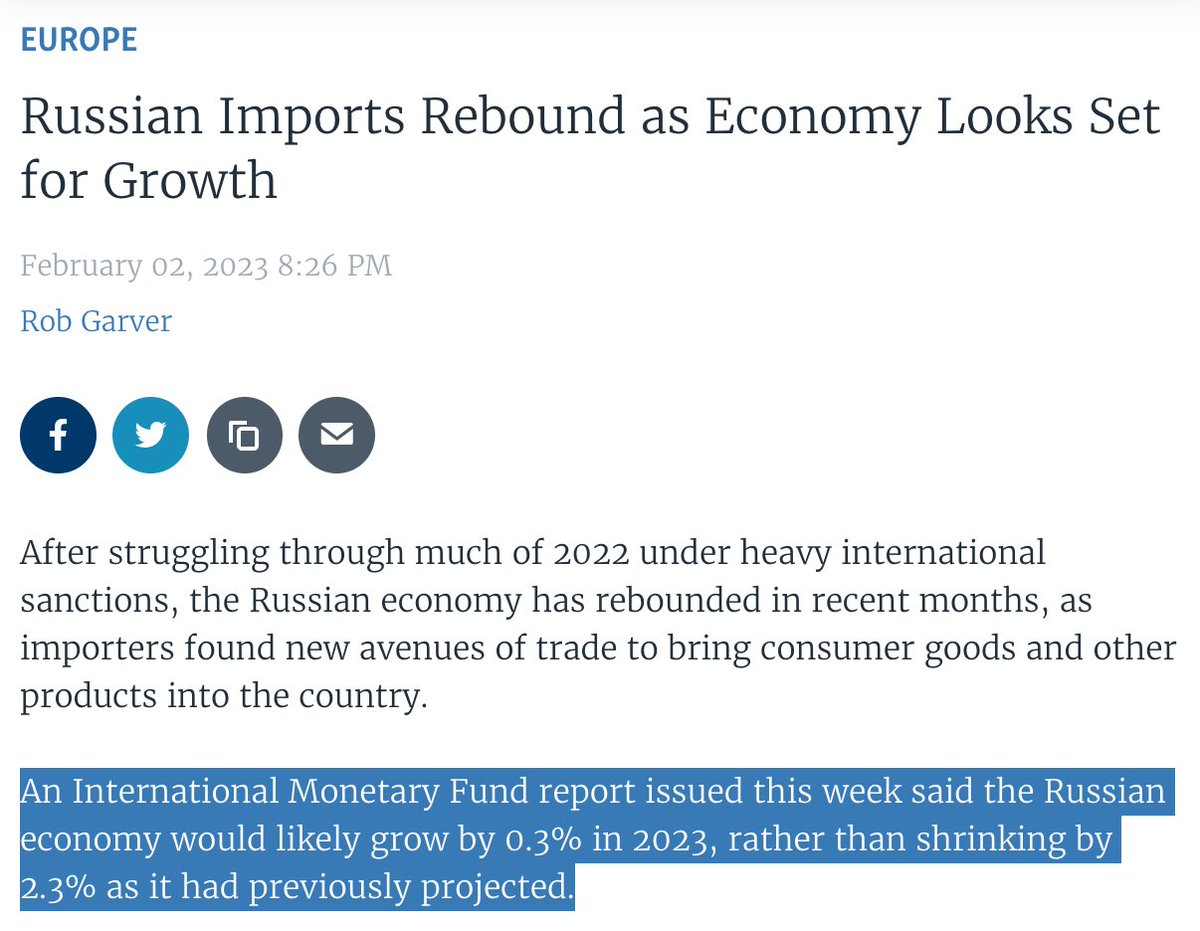
It also must overcome grassroots resistance from within Taiwan itself. While less likely to be a determining factor, recent political losses incurred by Taiwan’s virulently anti-Beijing party during municipal elections could be interpreted as the people calling for de-escalation. 



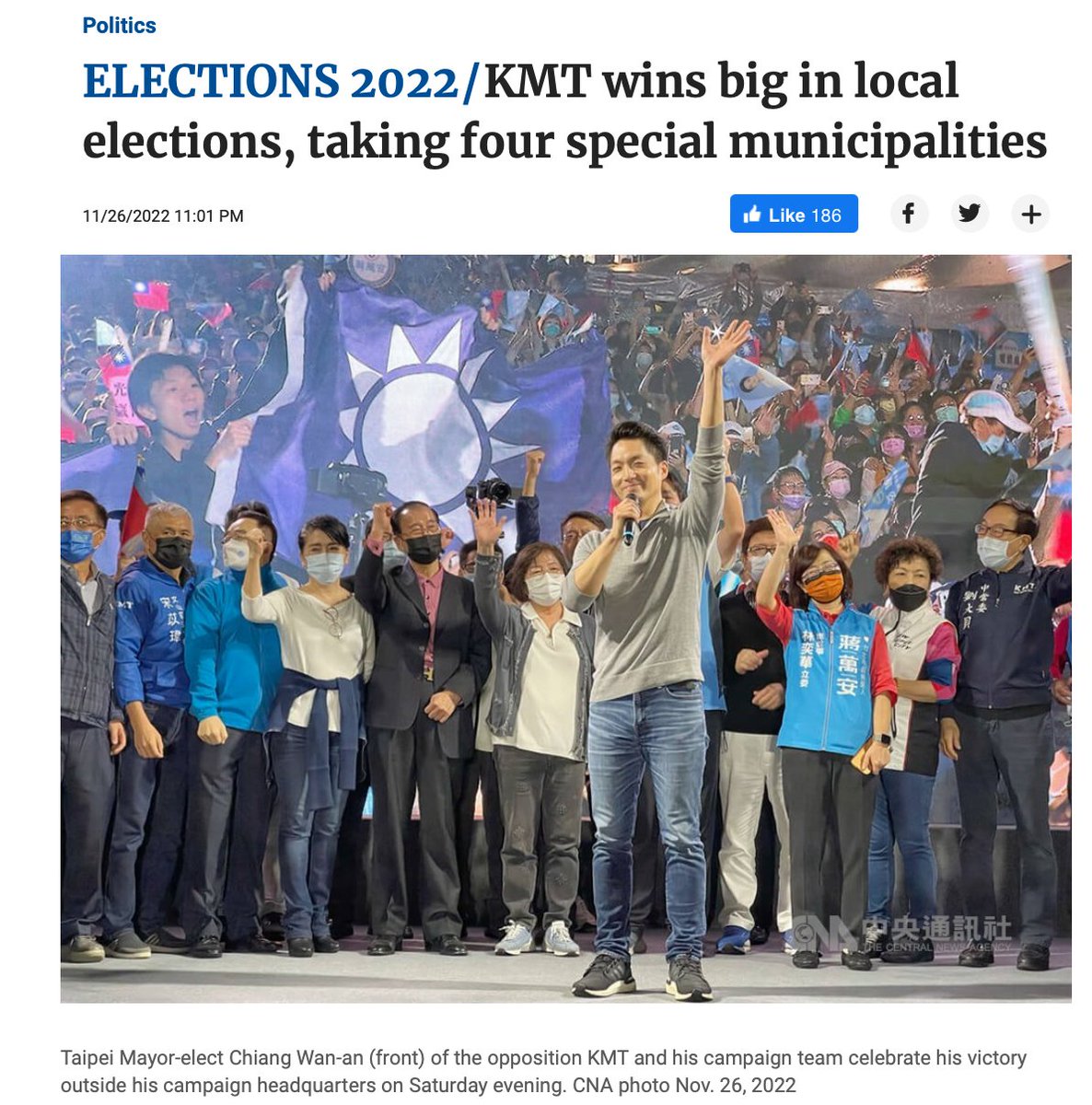

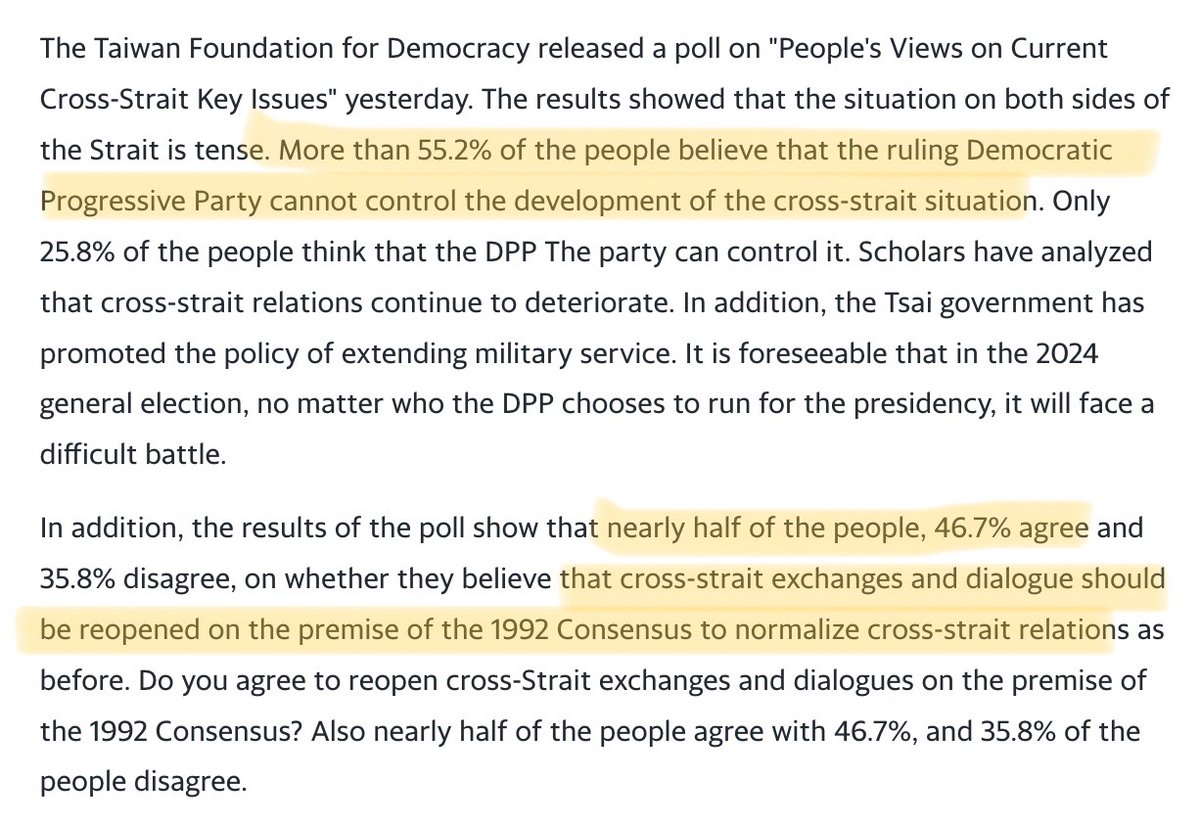

And while it is difficult to predict which way these factors will play out, the final most important piece hinges on whether the US can successfully weather a rapid economic decoupling from China.
Put simply: China no longer needs US capital, but the US needs Chinese goods.
Put simply: China no longer needs US capital, but the US needs Chinese goods.
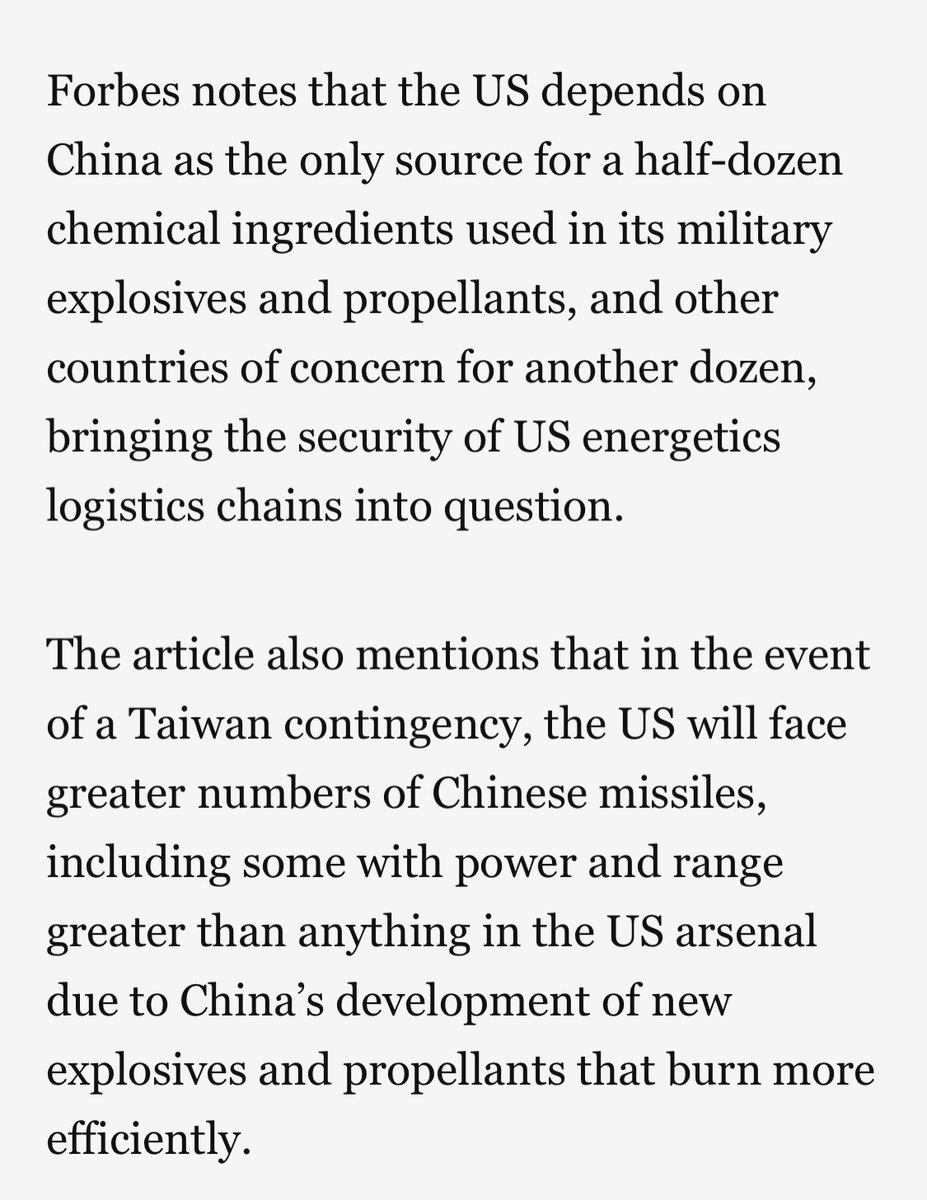
Historically, conventional wars have been won by the side that can out-produce the other. And over the past 12 months, we’ve seen the entirety of NATO be out-produced by Russia, who we’ve been repeatedly told are nothing more than a backwater petrostate.
Consider then that China not only has the largest productive power of any country in history but is led by arguably the most competent political structure in the world, which in the past decade eliminated extreme poverty and navigated a pandemic with minimal loss of life. 

China is also leading the US in many key technology sectors. Which is why the US began a scattershot campaign to depict virtually every facet of Chinese tech as a trojan horse for spyware, from port cranes, to Huawei phones, to Tiktok, to weather balloons, to 5G network equipment 



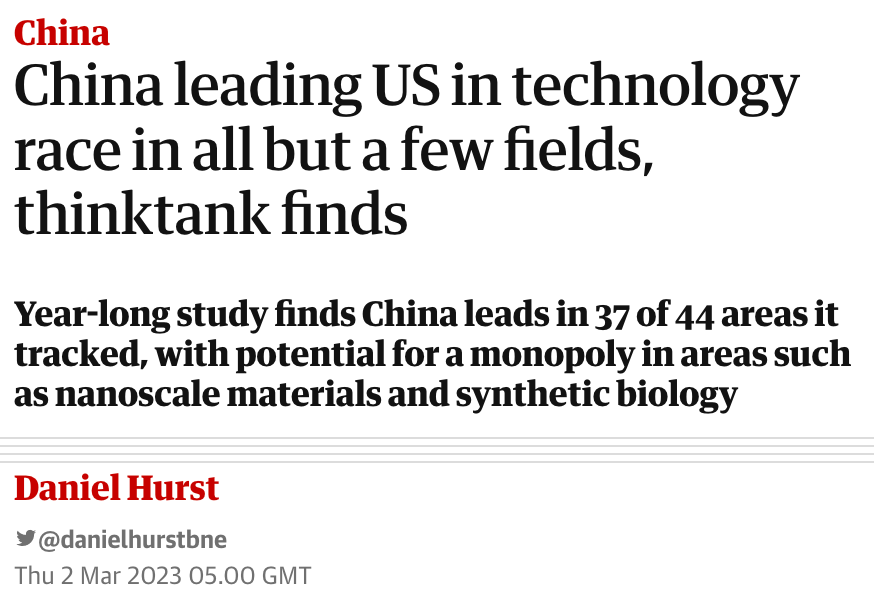

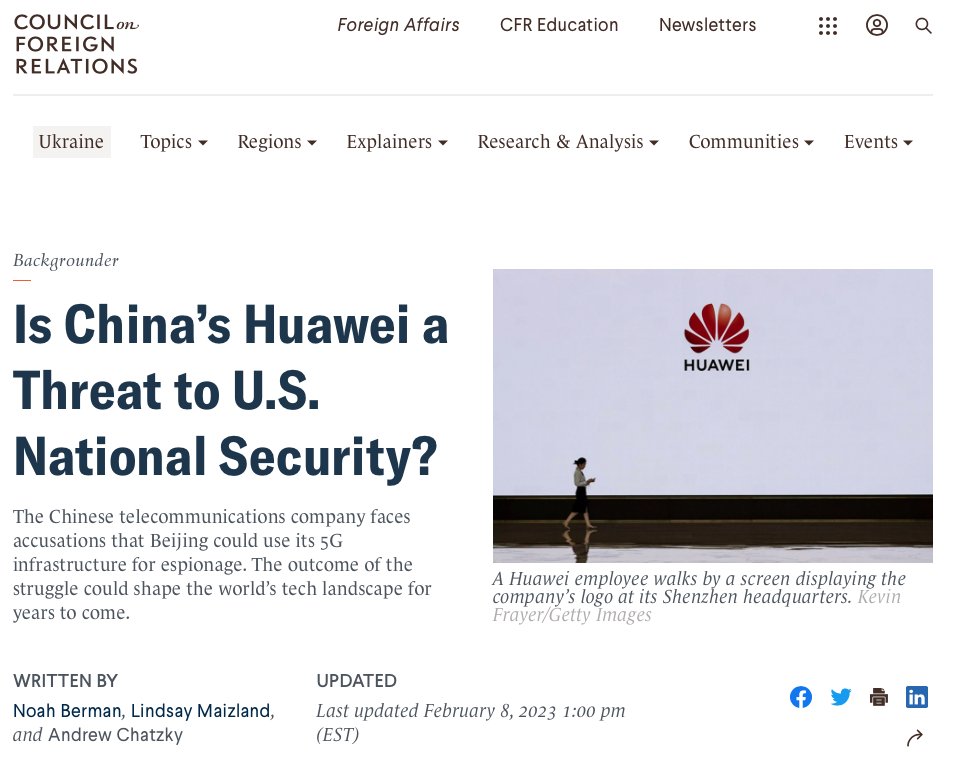
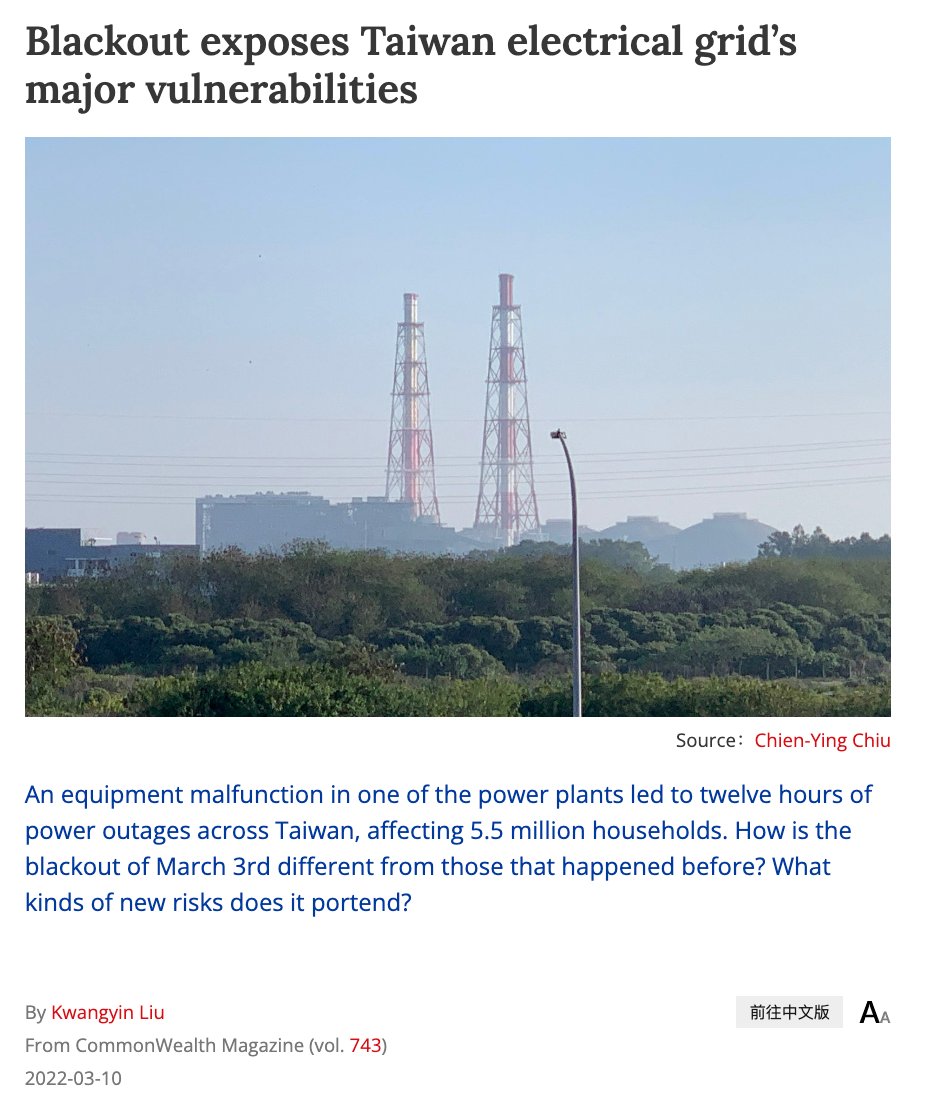
Meanwhile, except for a few high-tech export industries like arms and commercial aircraft, the US largely deindustrialized decades ago. And while it hopes to re-add chip fabrication to its strategic arsenal, it’s clear that re-industrialization will be a long and arduous process. 

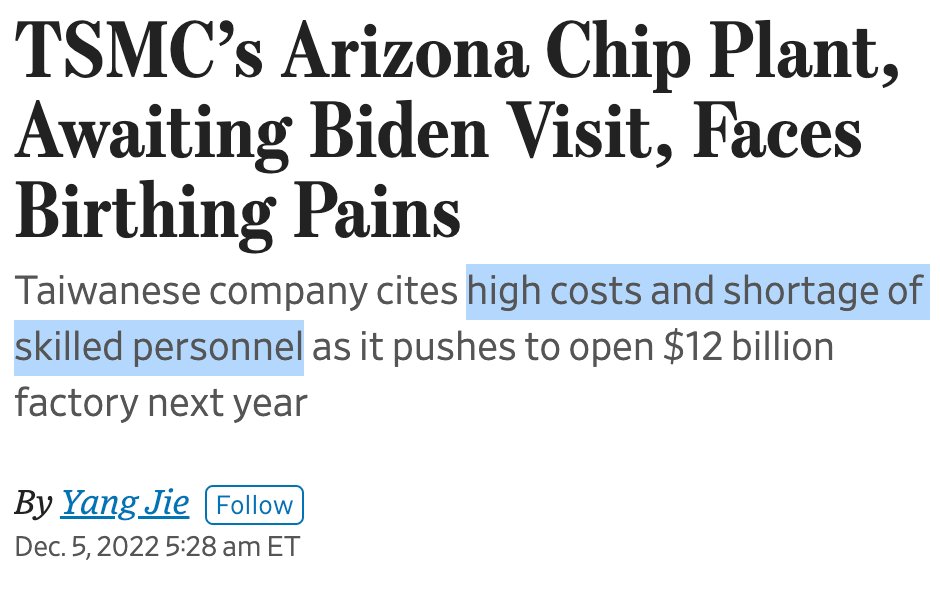

This is because without dollar dominance, US industry cannot remain competitive while being smothered beneath layers of rentier parasitism that drive up the cost of US labor. To survive, the US must either maintain global hegemony or rid itself of its parasitic rentier class.
While US labor must excise its massive rentier parasite if it ever hopes to be competitive in a fair global market, China’s govt has repeatedly intervened on behalf of what is best for the working class as a whole. 


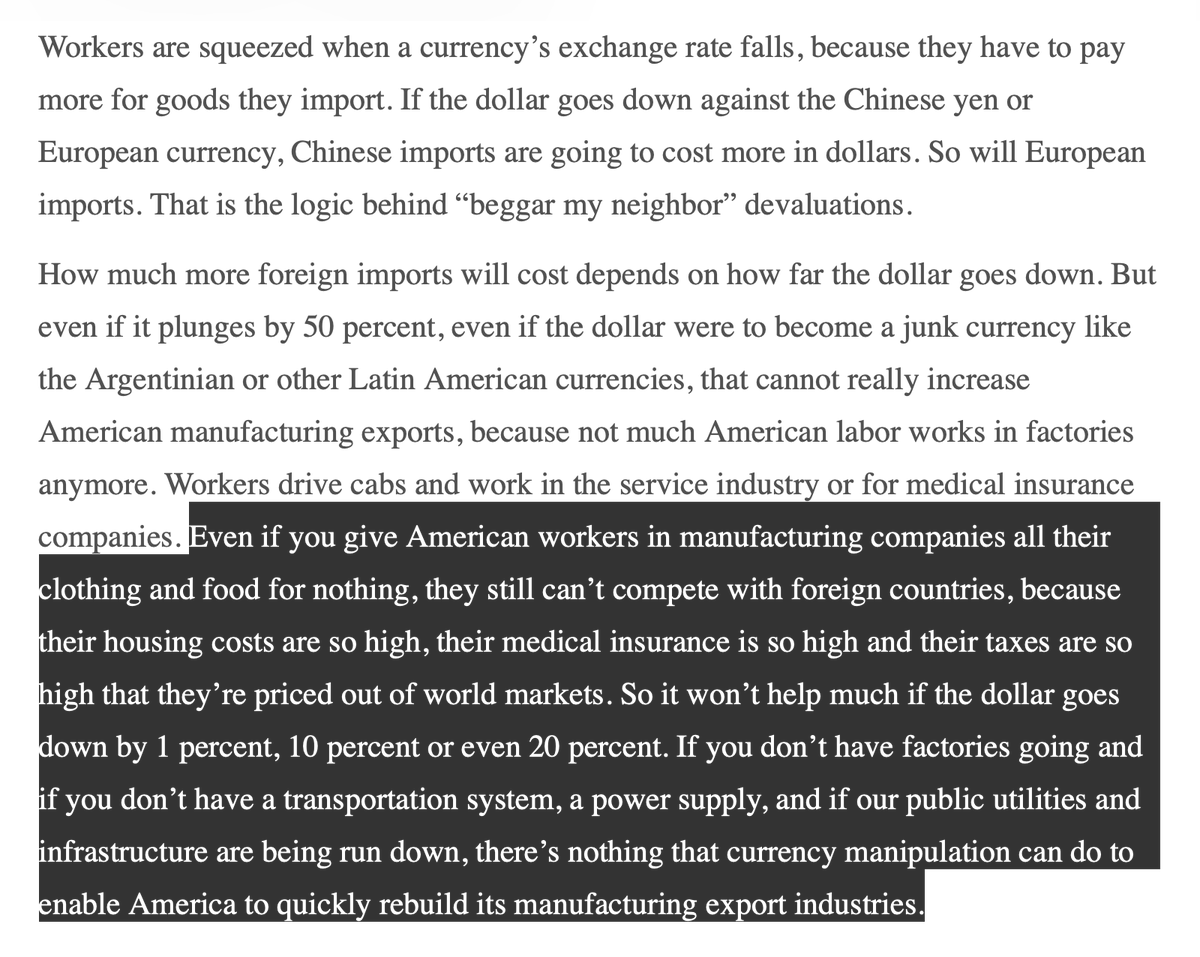


As the costs of maintaining US empire are further shifted onto client states and the conditions for the working classes within Japan, Germany, and the UK rapidly deteriorate, politicians steering their countries into continued US vassalage will become targets of popular anger. 

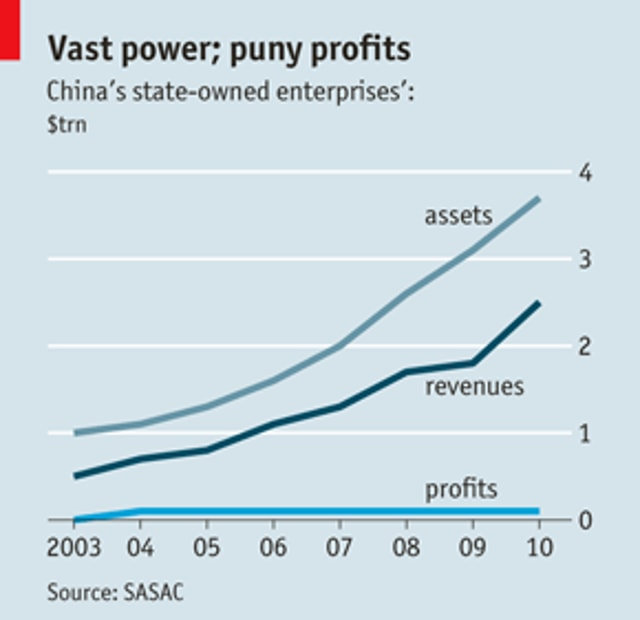
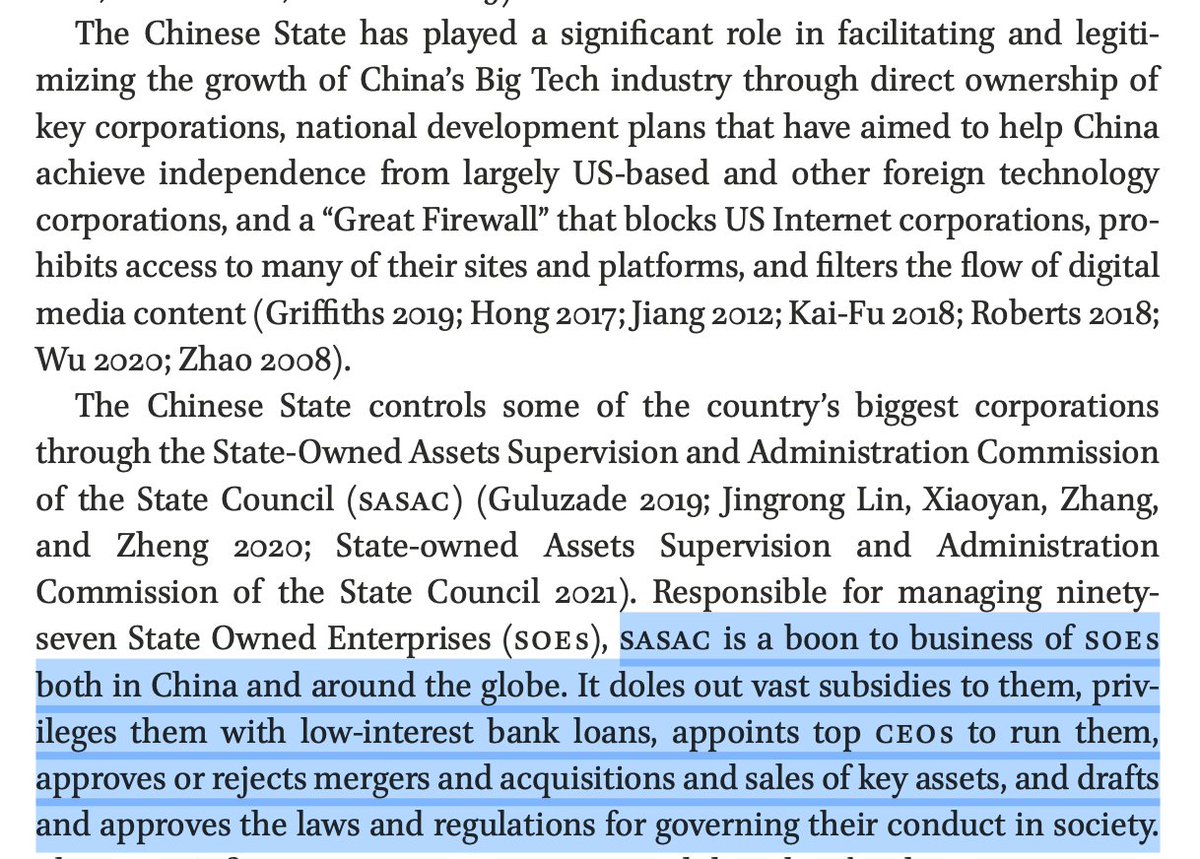
As the US weakens, global north countries will need to decide where their long-term interests lie. There will come a point when the rational path to a soft landing will involve resisting the old world order and embracing the new. The calculus will be different for every country. 

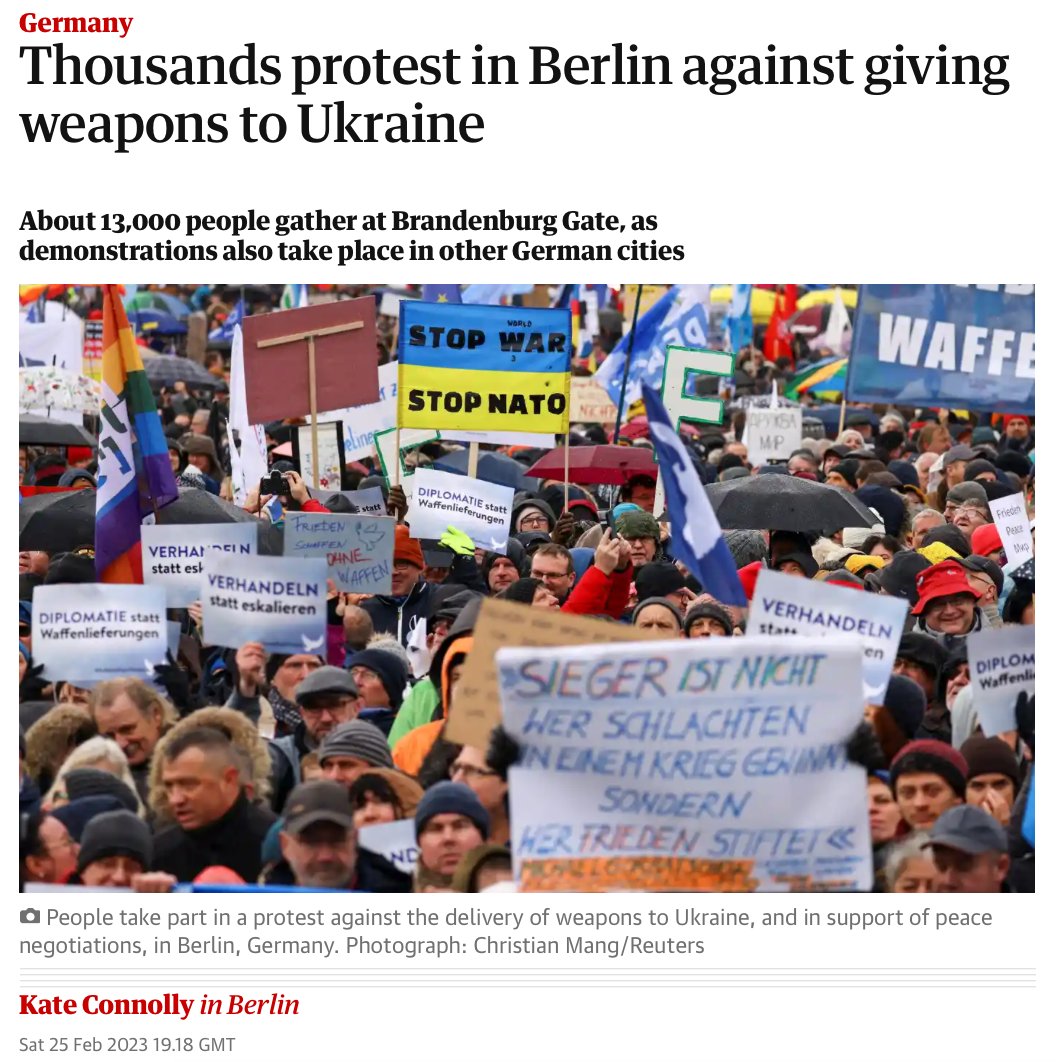
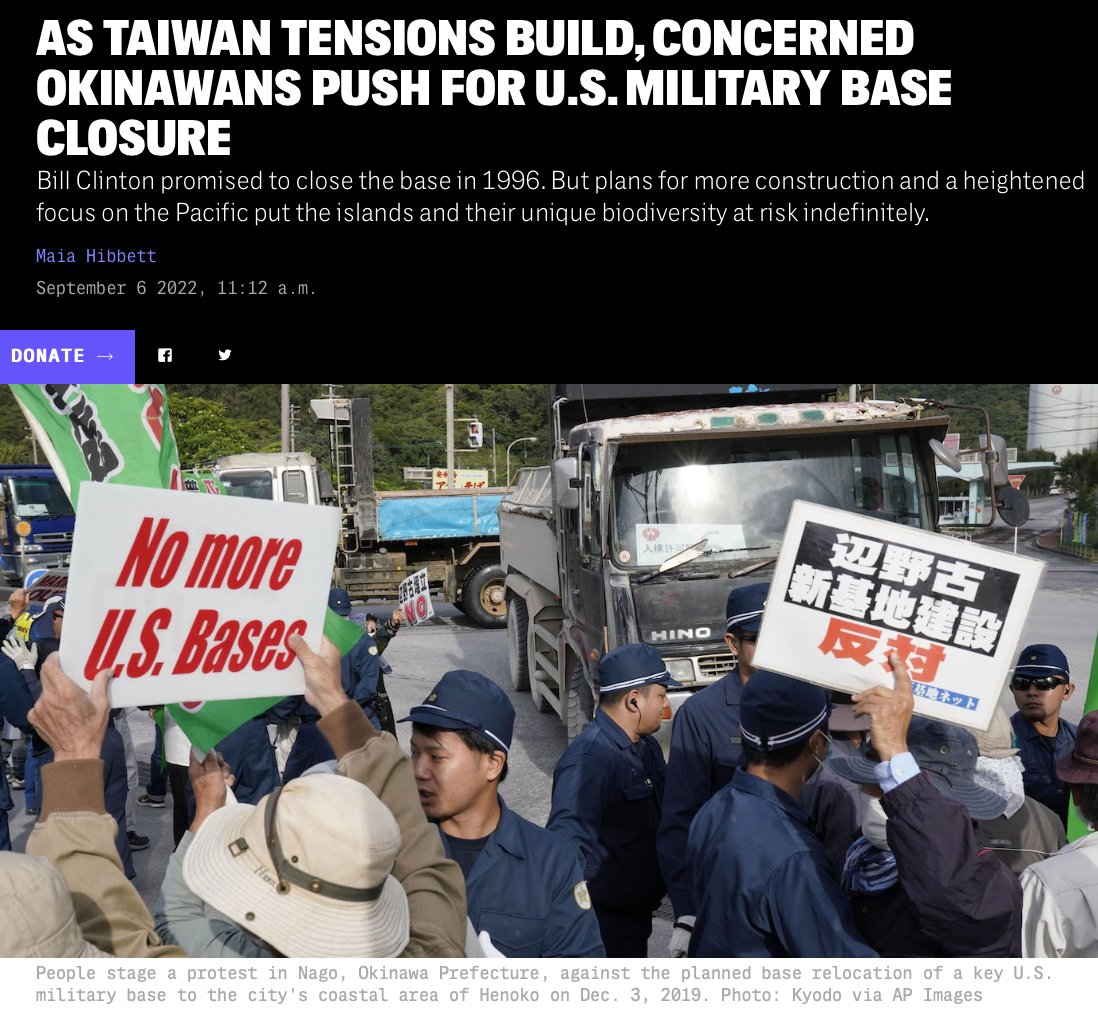
For its part, China has risen not through conquest or brutal exploitation of the periphery, but by peacefully becoming the manufacturing heart of the world, engaging in mutually beneficial trade, and, in the process, accumulating the largest trade surplus in history.
Not out of benevolence, but because a more equitable and interconnected global economy where the labor of the collective periphery becoming less exploitable materially benefits China, since western corps must then reckon with a world where there is nowhere cheaper to relocate.
The US seeks an end to history, in which all opposition to neoliberal capitalism is destroyed, and the current exploitative order persists into eternity. But history marches ever forward.
The old world is dying, and the new world has birthed: now is the time to slay monsters.
The old world is dying, and the new world has birthed: now is the time to slay monsters.
Link back to Part 1
https://twitter.com/bidetmarxman/status/1635689534225625110
• • •
Missing some Tweet in this thread? You can try to
force a refresh
























